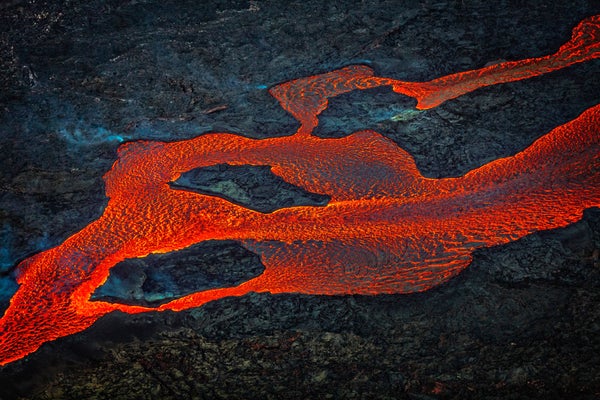Our planet is always on the move. Earth’s surface is a jigsaw puzzle of enormous plates of crust that continuously jostle about. They bulldoze into one another, slip under one another and slide apart in mighty processes that build soaring mountain chains, pave new lands with fresh lava and carve colossal oceans. But 2.3 billion years ago that motion slowed to a crawl.
That strange hiatus shows up in an uncanny gap in the geologic record, revealed in research published January 29 in Nature Geoscience. “The end result here is that there’s a missing chapter in Earth’s history,” says co-author Ross Mitchell, a geologist at Curtin University in Australia. Because jostling movements leave traces and trails on our planet, including the creation of new rocks, the absence of those rocks indicates a sharp reduction of motion, as if the planet slammed on the brakes roughly 2.3 billion years ago and kept them on for a long time. “It’s almost like there was a speed limit for 100 million years,” Mitchell says. The planet’s plates slowed to a snail’s pace, its mountains were cut short and its volcanoes fell dormant. The world became quiet and still.
Although various data sets have hinted such a gap might exist, many scientists remained skeptical. David Evans, a geologist at Yale University who was not involved in the study, for example, thought those gaps would surely fill in as geologists overturned more and more rocks with time. To try and settle the issue, Christopher Spencer, a geologist from Curtin, along with Mitchell and other colleagues decided to compile the largest statistical sample yet. They pored through data sets that included over 400,000 minerals and 700,000 rock samples of various types—from those that form from hardened magma to those that form when a continental plate crumples and is pushed upward to create a mountain range. But at the end of the day they simply could not uncover any rocks or minerals that appeared between 2.3 billion to 2.2 billion years ago.
On supporting science journalism
If you're enjoying this article, consider supporting our award-winning journalism by subscribing. By purchasing a subscription you are helping to ensure the future of impactful stories about the discoveries and ideas shaping our world today.
That has convinced Evans. Although he admits he cannot help but worry about the many rocks that lie inaccessible beneath Antarctica’s vast ice sheet, he is more certain the lull will stand the test of time. “This paper undeniably is the most detailed study of this topic,” he says. “In that regard, it is state of the art and should keep us talking about the issue for a long time.”
Spencer and his colleagues think the pause reflects a period in Earth’s history where the continents were welded together into a single supercontinent known as Superia. It is a story geologists know well: continents appear to join together and separate in an orderly cycle. Roughly 275 million to 200 million years ago, all the continents on Earth were nestled together in one supercontinent known as Pangaea. Wind the clock back further and other supercontinents emerge like Nuna and Rodinia. But Superia, still further back in time, was different. In fact, a more appropriate term for it might be a “mini supercontinent” because Spencer and his colleagues think it was only the size of Antarctica. There simply was not a lot of surface to the continental plates at this time.
The geologic pause may have been the reason those surfaces grew. When landmasses came together like a newly completed puzzle, they stopped jostling about and stayed put. But with the cessation of plate tectonics, Earth also lost the mechanism by which it expelled heat—and that means the 100-million-year-long lull essentially transformed Earth into a pressure cooker. Close the lid for a while, Mitchell says, and the pent-up energy will cause plate tectonics to come back with a vengeance. Magma chambers eventually started to flare up, causing Superia to stretch and tear, breaking apart again into several different continents. What is more, those magma chambers poured so much liquid rock onto the planet’s surface that it hardened into solid land—building even larger continents than before. Thanks to the flare-up after this lull, Earth added a hefty amount of mass to its continental plates, paving the way for Nuna, the first truly mighty supercontinent, which formed roughly 1.6 billion years ago. “It blows out of the water anything that came before it,” Mitchell says.
Not all scientists are convinced this flare-up created so much new crust. But many do agree it is the first evidence for a true geologic gap and is likely connected to the cycle of supercontinents—even if the details need to be fleshed out. And if a worldwide crustal mash-up created one pause like this, other supercontinent agglomerations may have created others. Indeed, Mark Behn, a geologist at Woods Hole Oceanographic Institution who was not involved in this work, co-authored a study in 2008 that found a potential lull some 900 million years ago after the formation of the supercontinent Rodinia. As such, he is anxious to see the same methods developed by Spencer and his colleagues applied to that more recent time period. It could help them understand how the world is shaped and reshaped, time and again.
